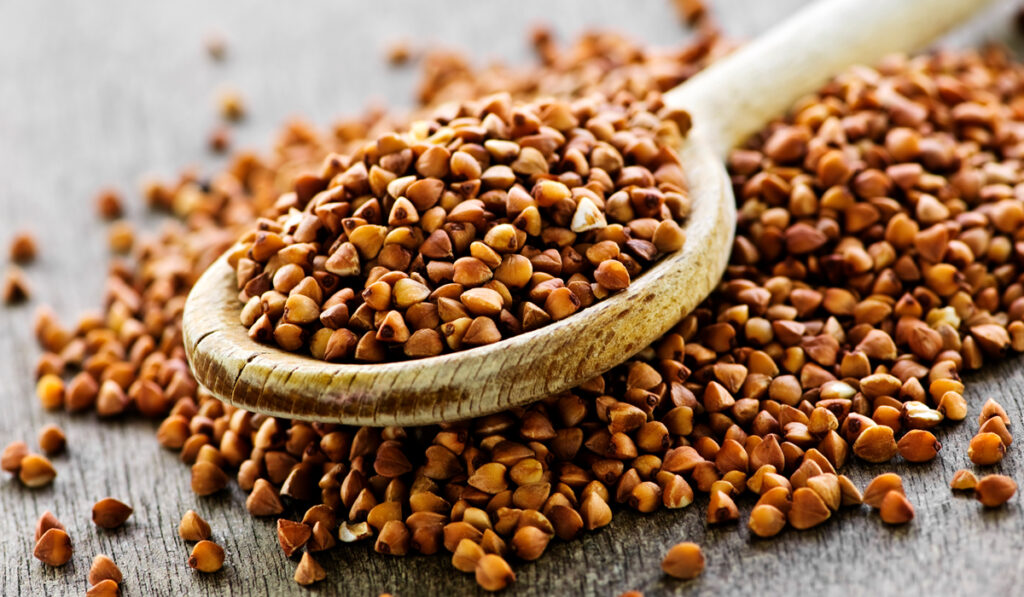Using animal models, researchers at Vanderbilt University Medical Center have established that 2-HOBA (2-hydroxybenzylamine), a nutraceutical in buckwheat seeds, has anti-inflammatory properties that reduce the risk of atrial fibrillation, atherosclerosis and hypertension.
More recently, researchers have placed this nutraceutical center stage in studies on reducing flares in patients with rheumatoid arthritis (RA).
To probe whether synthetic 2-HOBA is safe and tolerable, and whether it influences the biomarkers associated with inflammation, rheumatologist Michelle Ormseth, M.D., is leading a four-week phase II pilot trial of 2-HOBA in patients with active rheumatoid arthritis.
“The discovery that isolevuglandins, which bind to proteins, are a major culprit in inflammation was made here at Vanderbilt; now we also have the homegrown discovery that 2-HOBA is an effective scavenger for these,” said Ormseth. “All this has been 20 years in the making. It’s exciting to finally be examining the evidence in humans.”
Years of Research Identifies Target
Researchers at Vanderbilt were among the first to identify increased oxidative stress in patients with RA, promoting the hallmark proinflammatory cycle. The follow-up goal became finding the culprit, and then identifying a compound to interfere at the right time and the right place to interrupt the chain of events.
The intuitive approach of using an antioxidant like vitamin E to head off production of reactive oxygen species (ROS) from the outset is flawed, Ormseth contends. While this would prevent the generation of protein adducts, it can affect essential cellular processes. In addition, squelching ROS production altogether prevents T cells from functioning properly, which she says may actually worsen RA disease.
Seeking to overcome these obstacles, Vanderbilt pharmacologists L. Jackson Roberts II, M.D., professor emeritus, and Sean Davies, Ph.D., investigated biochemical reactions further downstream, but in advance of the formation of the immunogenic and proinflammatory protein adducts.
Their research led to the discovery that lipid metabolites called isolevuglandins (isoLGs) could be the interventional target they sought. These isoLGs are produced after ROS formation and lipid peroxidation occurs. They attach to primary amines of proteins and DNA nearly instantaneously.
“The discovery that isolevuglandins, which bind to proteins, are a major culprit in inflammation was made here at Vanderbilt; now we also have the homegrown discovery that 2-HOBA is an effective scavenger for these.”
Finding a scavenger that would work fast enough to interrupt this rapid attachment of isoLGs to proteins, thus preventing the formation of protein adducts, became the challenge.
Minuteman Scavenger Emerges
After screening hundreds of different compounds, Roberts and Davies came up with just such a scavenger in 2-HOBA. 2-HOBA is not an antioxidant, so it does not prevent formation of ROS, but rather scavenges for reactive dicarbonyls, like isoLGs, downstream from ROS formation.
Preclinical studies subsequently demonstrated that 2-HOBA works faster than the natural biological sequence, intercepting the protein adduct formation and thereby preventing damage from high oxidative stress.
2-HOBA Pilot in Phase II Trial
Once 2-HOBA proved safe and tolerable in animal models, the researchers designed a randomized controlled trial to determine its safety, tolerability, and effect on an estimated 32 patients with RA. Primarily, they will measure changes in significant inflammatory biomarkers.
“Mostly we will focus on the effects of 2-HOBA on isoLG adducts and the levels of proinflammatory cytokines, which are increased systemically in RA and are drug targets,” Ormseth said. “I expect to see big enough changes in these to substantiate a larger clinical trial to directly evaluate effect on RA disease activity.”
The study will examine changes in standard autoimmune and inflammatory measures, such as C-reactive protein and sedimentation rates, as well as blood pressure and changes in cellular and plasma isoLG adducts.
RA and Beyond
In animal models of systemic lupus erythematosus (SLE), Vanderbilt researchers found that scavenging isoLGs with 2-HOBA attenuates renal injury and improves blood pressure. Other Vanderbilt researchers demonstrated the mechanisms by which 2-HOBA helped reduce atherosclerosis in animals, both by inhibiting cytokines and lowering the oxidative modifications on HDL to enable better efficiency in removing cholesterol from atherosclerotic lesions in vessel walls.
“We have reason now to think that isoLGs may explain some of the increase in cardiovascular disease in patients with either SLE or RA,” Ormseth said.
Even with its powerful potential, Ormseth says 2-HOBA is likely to be an additive versus a standalone treatment for RA, since most patients require some immunosuppressants. She is also exploring other RA treatments, including one for the critical regulatory role of non-coding RNAs in inflammatory diseases.
“We now know that patients who achieve and sustain remission are better able to preserve physical function and avoid erosive disease, so being aggressive and having multiple treatments at our disposal continues to be our goal,” she said.





